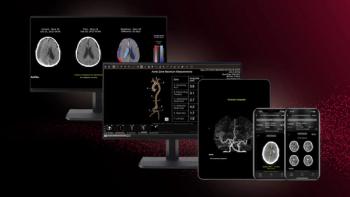
Determining the Effectiveness of Anti-PD1 Treatment in Hodgkin Lymphoma Patients
Imaging with F-FDG PET/CT at three months after initial treatment demonstrates effectiveness of anti-PD1 treatment for Hodgkin lymphoma.
Three-month 18F-FDG PET/CT imaging helps detect which patients with Hodgkin lymphoma (HL) respond to immune-checkpoint blockade by anti–programmed death 1 antibodies (anti-PD1), according to a study published in the
Researchers from France and the United States performed a small retrospective study to investigate the accuracy of three-month 18F-FDG PET/CT imaging to identify HL patients who respond to anti-PD1. They also investigated the frequency of new immune patterns of response and progression.
Sixteen relapsed or refractory classic HL patients were included in the study. Their median age was 39 years and they had a median of six previous lines of therapy with pembrolizumab or nivolumab, with a mean follow-up of 22.6 months. The best overall responses were recorded according to the International Harmonization Project Cheson 2014 criteria and LYmphoma Response to Immunomodulatory therapy Criteria (LYRIC) (2016 revised criteria). Patients achieving an objective response at any time during the anti-PD1 treatment were classified as responders.
The results showed that nine of the patients (56 percent) achieved an objective response and two patients died at seven months to progressive disease. Imaging with 18F-FDG PET/CT detected all responders at three months and reclassified best overall response in five patients compared with CT alone.
The researchers observed a decrease in tumor metabolism and volume (SUVmean, metabolic tumor volume) and increase in healthy splenic metabolism at 3 months were in responders (area under the curve > 0.85).
Five of 16 patients (31 percent) displayed new imaging patterns related to anti-PD1 and the researchers detected two transient progressions consistent with indeterminate response according to the LYRIC (2016) (IR2b at 14 months and IR3 at 18 months). Three patients had new lesions associated with immune-related adverse events.
The researchers concluded that 18F-FDG PET/CT scans performed at three months detected HL patients who responded to treatment with anti-PD1. “New patterns were encountered in 31 percent of patients, emphasizing the need for further evaluation in larger series and close collaboration between imaging and oncology specialists on a per-patient basis,” they wrote.
Newsletter
Stay at the forefront of radiology with the Diagnostic Imaging newsletter, delivering the latest news, clinical insights, and imaging advancements for today’s radiologists.



























